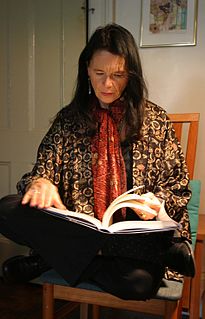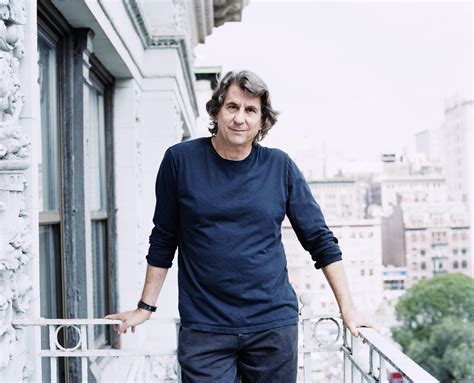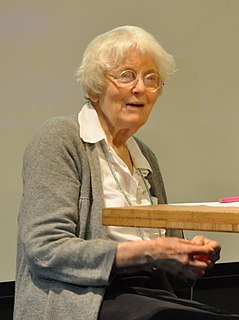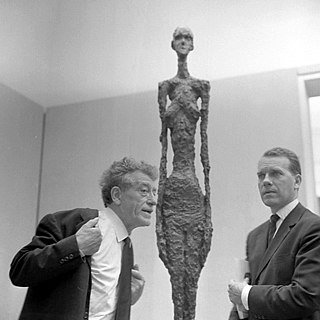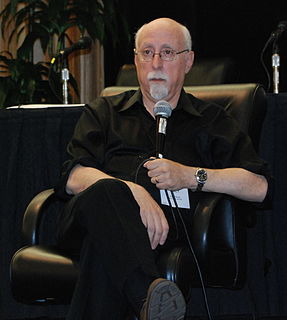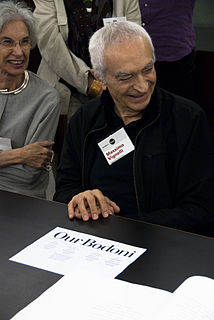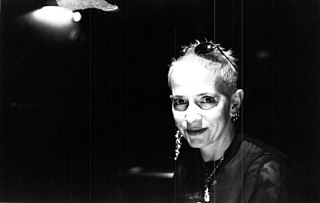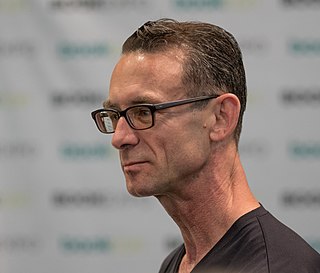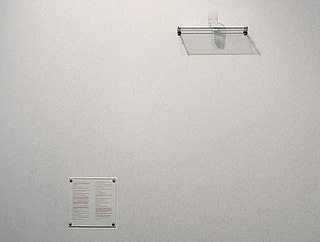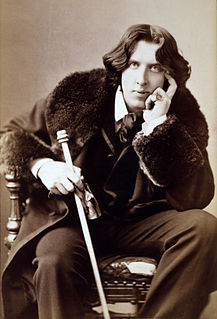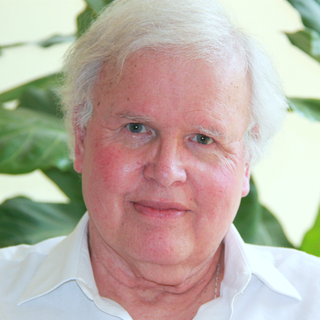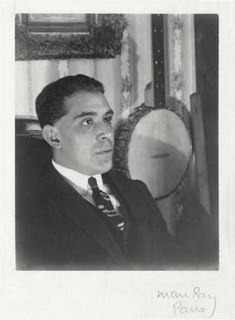Top 214 Architectural Quotes & Sayings - Page 4
Explore popular Architectural quotes.
Last updated on April 19, 2025.
The vision shared by both [French utopian] Charles Fourier and Robert Owen was for an entire town to fit into one structure. Owen's design for what he called a "parallelogram" was essentially to have a whole city in one building, laid out around a huge quadrangle. Fourier's scheme was to build a massive Versailles-like structure that he called a "phalanstery." In both cases they had these architectural dreams that we now recognize as pretty unappealing.
To conjure a particular knowledge you visualize an architectural structure and then you walk around and see the details that then bring back the words or the poetry or the lines of thought. Memory's going extinct because we rely on machines and copies and so on. The idea of working with structures that conjure dreams, personages, history, time, that can be contained in this way as you walk through your mind, is a challenge.
While a great many other ideas and measures are of prime importance for the good life of the community, that which concerns its architectural expression is the notion of the community as limited in numbers, and in area... To express these relations clearly, to embody them in buildings and roads and gardens in which each individual structure will be subordinated to the whole - this is the end of community planning.
In Paris style is everything. That is traditionally understood. Every street, every structure, every shopgirl has style. The style of Parisian architecture has been proved and refined by at least three centuries of academic dictates and highly developed taste. There are few violations of this taste, and there is exemplary architectural consistency. Paris has defined the aesthetics of a sophisticated urban culture.
Compared with other Americans, journalists are more likely to live in upscale neighborhoods, have maids, own Mercedes and trade stocks, and less likely to go to church, do volunteer work or put down roots in a community. Journalists are over-represented in ZIP code areas where residents are twice as likely as other Americans to rent foreign movies, drink Chablis, own an espresso maker and read magazines such as Architectural Digest and Food & Wine.
When I come to a new city is I combine: I say, well, it's like Barcelona and Edinburgh, though I can't imagine what that would be. But Toronto, the last few times I've been here, what always comes up is Chicago and West Berlin. It's a big, sprawling city beside a lake, of a certain age and a certain architectural complexity. But the high-end retail core looks more like West Germany than the Magnificent Mile. Yonge Street is like K-Damm. There's an excess of surface marble and bronze: it's Germanic and as pretentious as pretentious can be.
It was very definitely architectural. I was using the words on the page as some kind of equivalent of a physical model. But I never thought at that point that I wanted to move toward architecture. I wanted to move toward real space. Sure, that's probably another way of saying, I want to move toward architecture. But I didn't define real space in terms of architecture, then.
The meaning of geography is as much a sealed book to the person of ordinary intelligence and education as the meaning of a great cathedral would be to a backwoodsman, and yet no cathedral can be more suggestive of past history in its many architectural forms than is the land about us, with its innumerable and marvellously significant geographic forms. It makes one grieve to think of opportunity for mental enjoyment that is last because of the failure of education in this respect.
The color and spectacle of Mexico's streets sparked my interest in community driven space and experience, a passion that I began to develop while studying architecture at Syracuse University and then at the Architectural Association School in London. Having been immersed in such a diverse array of lively environments, it would be impossible for me not to use these memories and experiences as inspiration for my work.
Faced with unmeasurables, people steer their way by magic. Before the invention of navigational instruments, a beautiful lady was carved on the prow of the boat to help sailors cross the ocean; and architects, grappling with the intangibles of design, select a guru whose work gives them personal help in areas where there are few rules to follow. The guru, as architectural father-figure, is subject to intense hate and love; either way, the relationship is personal, and necessarily one-to-one.
If the glass there in front of me astounds me more than all the glasses I've seen in painting, and if I even think that the greatest architectural wonder of the world couldn't affect me more than this glass, it's really not worth while going to the Indies to see some temple or other when I have as much and more right in front of me.
for man, woman, and child the tender, irregular, sensitive, living foot, which does not even stand with all its little surface on the ground, and which makes no base to satisfy an architectural eye, is, as it were, the unexpected thing. ... nothing makes a more helpless and unsymmetrical sign than does a naked foot.
Reading was only part of the thrill that a book represented. I got a dizzy pleasure from the weight and feel of a new book in my hand, a sensual delight from the smell and crispness of the pages. I loved the smoothness and bright colors of their jackets. For me, a stacked, unread pyramid of books was one of the sexiest architectural designs there was, because what I loved most about books was their promise, the anticipation of what lay between the covers, waiting to be found.
That the sight of people attracts still other people, is something that city planners and city architectural designers seem to find incomprehensible. They operate on the premise that city people seek the sight of emptiness, obvious order and quiet. Nothing could be less true. The presences of great numbers of people gathered together in cities should not only be frankly accepted as a physical fact... they should also be enjoyed as an asset and their presence celebrated.
Microsoft's Windows 3.1, released in 1992, was the first truly successful edition of Windows and juiced the Redmond juggernaut. Apple's Macintosh System 7.5, released in 1994, was another in a string of versions that lacked key architectural features that the Mac didn't have until Steve Jobs returned and brought with him the code that became OS X.
Out of the closets and into the museums, libraries, architectural monuments, concert halls, bookstores, recording studios and film studios of the world. Everything belongs to the inspired and dedicated thief…. Words, colors, light, sounds, stone, wood, bronze belong to the living artist. They belong to anyone who can use them. Loot the Louvre! A bas l’originalité, the sterile and assertive ego that imprisons us as it creates. Vive le vol-pure, shameless, total. We are not responsible. Steal anything in sight.
I started to begin to be interested in architecture and design when I was 14 years old, which was pretty early in life. And then I would start to look at architectural magazines and I eventually went to the school of architecture too, but one of the things I learned very early is that an architect should be able to design anything from a spoon to the city.
So many people that we met had some sort of connection to the [Olympics] games. Some story about how they volunteered there, or some sort of memory of it. It still is in the cultural memory and identity of these cities as much as it is in the physical and architectural memory. It's where these two things overlap, I think, that we're trying to explore with the photos.
The perennial architectural debate has always been, and will continue to be, about art versus use, visions versus pragmatism, aesthetics versus social responsibility. In the end, these unavoidable conflicts provide architecture's essential and productive tensions; the tragedy is that so little of it rises above the level imposed by compromise, and that this is the only work most of us see and know.
Perhaps if human desire is said out loud, the urban planes, the prisons, the architectural mirrors will take off, as airplanes do. The black planes will take off into the night air and the night winds, sliding past and behind each other, zooming, turning and turning in the redness of the winds, living, never to return.
The Japanese garden is a very important tool in Japanese architectural design because, not only is a garden traditionally included in any house design, the garden itself also reflects a deeper set of cultural meanings and traditions. Whereas the English garden seeks to make only an aesthetic impression, the Japanese garden is both aesthetic and reflective. The most basic element of any Japanese garden design comes from the realization that every detail has a significant value.
Italians don't have a unique style like France or Spain or Germany or the UK, it's different everywhere you go. The style of the girl in Milan is really architectural and modern. In Naples it's a completely different style, it's more dark. I'm sure our style was more precise in the past in the '50s or '60s where everything was very Sophia Loren. It's weird because obviously outside of Italy you think of one country, but when you're in the country you know how different the country is from the north to the center to the south to the island. There are so many differences.
I have been using the computer as a work aid since the mid-90's. It is extraordinarily well suited to how I think and work and has transformed my practice. Nearly everything I have done in the past 15 years would have been impossible without it. I use the computer for drawing, composing and colour planning everything, from postage stamps to paintings to architectural-scale installations.
Because it is a national landmark, there is only one way to judge the Kennedy Center - against the established standard of progressive and innovative excellence in architectural design that this country is known and admired for internationally. Unfortunately, the Kennedy Center not only does not achieve this standard of innovative excellence; it also did not seek it. The architect opted for something ambiguously called 'timelessness' and produced meaninglessness. It is to the Washington manner born. Too bad, since there is so much of it.
I do shop online! But I’m shopping online mostly in the home categories - One Kings Lane and Gilt. At a lot of architectural websites, I buy a lot of hardware for cabinetry like hinges and things like that from England. So you know for me, I shop at Net-A-Porter, but I don’t really shop that much for clothing online.
Perhaps there may come into my art also, no less than into my life, a still deeper note, one of greater unity of passion, and directness of impulse. Not width but intensity is the true aim of modern art. We are no longer in art concerned with the type. It is with the exception that we have to do. I cannot put my sufferings into any form they took, I need hardly say. Art only begins where Imitation ends, but something must come into my work, of fuller memory of words perhaps, of richer cadences, of more curious effects, of simpler architectural order, of some aesthetic quality at any rate.
When I got the opportunity to do the new wing [the Schauhaus] for the German Historical Museum, for instance, I didn't see it as an opportunity for my own ego, to do something so exciting that every architectural publication would want to put it on the cover. I accepted it because I knew it was going to be a very difficult project, and I wasn't sure I could do something exciting there.
I do shop online! But I'm shopping online mostly in the home categories - One Kings Lane and Gilt. At a lot of architectural websites, I buy a lot of hardware for cabinetry like hinges and things like that from England. So, you know, for me, I shop at Net-A-Porter, but I don't really shop that much for clothing online.
Once a new social stage appears in a culture, it will spread its instructional codes and life-priority messages throughout that culture's surface-level expressions: religion, economic and political arrangements, psychological and anthro-pological theories, and views of human nature, our future destiny, globalization, and even architectural patterns and sports preferences. We all live in flow states; there is always new wine, always old wineskins. We, indeed, find ourselves pursuing a neverending quest.
Painting for me is like a fabric, all of a piece and uniform, with one set of threads as the representational, esthetic element, and the cross-threads as the technical, architectural, or abstract element. These threads are interdependent and complementary, and if one set is lacking the fabric does not exist. A picture with no representational purpose is to my mind always an incomplete technical exercise, for the only purpose of any picture is to achieve representation.
To approach a city, or even a city neighborhood, as if it were a larger architectural problem, capable of being given order by converting it into a disciplined work of art, is to make the mistake of attempting to substitute art for life. The results of such profound confusion between art and life are neither life nor art. They are taxidermy.
The debut show, “Second Lives: Remixing the Ordinary,” is supposed to be about how artists reuse humble or unusual materials. There’s good work here, but much of what’s on view is actually more about obsession and repetition: a couch made out of 3,500 quarters, a necklace composed of 100 handgun triggers. The building, too, seems caught between wanting to be an object of decorative delectation and making an architectural statement.

